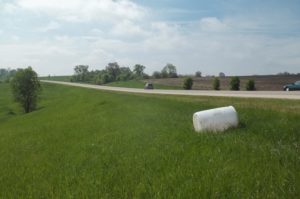A release of a Hazardous Substance above the RQ at your facility or during transportation must be reported to the applicable Federal, State, and local emergency response agencies. To perform the required reporting it is necessary to understand the two separate Acts/regulations that created them and their inter-relation.
The Comprehensive Environmental Response, Compensation, & Liability Act (CERCLA) also known as Superfund, passed in 1980 created a list of Hazardous Substances along with threshold amounts in lbs/kg that triggered reporting if released into the environment in a 24 hour period. EPCRA (The Emergency Planning and Community Right to Know Act) was passed in 1986 in the wake of the release of a toxic pesticide in Bhopal, India that killed thousands of people. The purpose of EPCRA was to increase the public’s access to information about the hazardous substances that are or had the potential to be released to the environment. It also created a list of Extremely Hazardous Substances with their own reporting thresholds and expanded the notification process in the event of a release of a Hazardous Substance (which continued to be regulated under CERCLA as well).
This 1-2 punch of legislation created two sets of regulations that, at times, overlap in their reporting responsibilities. In the event of a spill or release – either on your property or off – you must be aware of your reporting responsibilities under the applicable regulations.
The table below outlines and summarizes the regulations of CERCLA found at 40 CFR 302 and EPCRA found at 40 CFR 355.
| Legislation: | CERCLA – The Comprehensive Environmental Response, Compensation, & Liability Act aka: Superfund | EPCRA – The Emergency Planning and Community Right to Know Act. aka: Title III of SARA (The Superfund Amendment and Reauthorization Act). |
| Date legislation passed: | 1980 | 1986 |
| The regulations: | 40 CFR 302 | 40 CFR 355 |
| Administrative agency: | US EPA | US EPA |
| 1. Must report releases of: | Hazardous Substances | Hazardous Substances and Extremely Hazardous Substances |
| 2. Identified at: | Table 302.4 of 40 CFR 302 | Table 302.4 of 40 CFR 302 and Appendices A & B of 40 CFR 355 |
| 3. When a release is: | Equal to or greater than the Reportable Quantity (RQ) in a 24 hour period. | Equal to or greater than the Reportable Quantity (RQ) in a 24 hour period. |
| 4. Must immediately notify: | Community emergency coordinator for the Local Emergency Planning Committee (LEPC) of any area likely to be affected by the release. Notify relevant local emergency response personnel if no LEPC. and State Emergency Response Commission (SERC) of any State likely to be affected by the release. | |
| 5. Form of immediate notification must be: | Phone: 800.424.8802 (202.267.2675 in Washington DC) or Fax: 202.267.1322 Per 40 CFR 302.6 | Oral with information required by 40 CFR 355.40(a). |
| 6. Immediate notification must be made by: | Owner, operator, or person in charge. | Owner, operator, or person in charge. |
| 7. Follow-up notification must be: | None required. | Written as soon as practicable after the release with information required by 40 CFR 355.40(b). |
| If release occurs during transportation or storage incident to transportation: | Same | Notify the 911 operator, or regular operator if 911 not available, immediately with information required by 40 CFR 355.40(a). A written follow-up notification is not required in this situation. |
| Releases exempt from notification requirements: |
|
|
Like this article? Subscribe to my Monthly Newsletter No marketing emails! |
So, in the event of a release of a substance above the RQ in a 24 hour period…
- If it appears only on the CERCLA list (aka: Hazardous Substance), you must complete the reporting requirements of both CERCLA and EPCRA.
- If it appears on both the CERCLA list (aka: Hazardous Substance) and the EPCRA list (aka: Extremely Hazardous Substance), you must complete the reporting requirements of both CERCLA and EPCRA.
- If it appears only on the EPCRA list (aka: Extremely Hazardous Substance), you must complete the reporting requirements of EPCRA only.
Daniels Training Services, Inc. 815.821.1550 |
